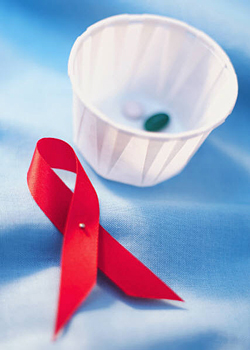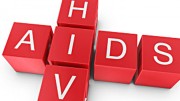 By: Chuck Colbert/TRT Reporter–
By: Chuck Colbert/TRT Reporter–
The global response to the worldwide AIDS epidemic continues making remarkable progress in HIV prevention, improved treatment, and reduced AIDS-related deaths, a new report says, holding out hope and the possibility for the end of AIDS.
“The global community has embarked on an historic quest to lay the foundation for the eventual end of the AIDS epidemic,” stated the United Nations in its latest report on the global AIDS pandemic. “This effort is more than merely visionary. It is entirely feasible.”
The report was released on Tuesday, November 20, in advance of World AIDS Day Saturday, December 1.
But unsafe sexual behavior, intravenous drug use, stigma, discrimination, and misinformation remain as formidable challenges in stemming a disease that, entering its fourth decade, has claimed nearly 30 million HIV-related deaths.
Since the beginning of the epidemic more than 60 million people have contracted HIV. But there is evidence that the AIDS pandemic is waning.
“Results,” the title of a 48-page report issued by the Joint United Nations Programme on HIV/AIDS (UNAIDS), shows a dramatic 50 percent decrease in new HIV infections across 25 low- and middle-income countries, mostly in Africa, the continent most affected by HIV.
Altogether, new infections globally fell to 2.5 million last year, down from 2.6 million, which represents a 20-percent decrease from 2001.
“The pace of progress is quickening,” said Michel Sidibé, executive director of UNAIDS in a statement. “What used to take a decade is now being achieved in 24 months.”
Better yet, in some countries with the highest prevalence of HIV in the world, rates of infection have been reduced dramatically since 2001. For example, in Malawi the infection rate dropped by 73 percent. In Botswana, the rate is down 71 percent, with similar decreases reported in Namibia (down 68 percent), Zambia (down 58 percent), Zimbabwe (down 50 percent), and South Africa and Swaziland (down 41 percent).
Declining numbers of HIV infections in children is a particularly encouraging finding of the report. Half the global reductions in new HIV infections in the last two years have been among newborns.
Last year, for instance, 330,000 children worldwide were infected with HIV, down from 370,000 in 2010 and 43 percent fewer than in 2003, according to UNAIDS.
Yet too many youth in the United States continue to become infected with HIV, the virus that causes AIDS, and few are tested. That’s one overarching take away point from a new report out by the Centers for Disease Control and Prevention, whose release was also timed ahead of World AIDS Day.
Young people between the ages of 13 and 24 in the U.S. account for more than a quarter of new HIV infections each year (26 percent); and 60 percent of these youth living with HIV are unaware they are infected, according to the CDC’s Vital Signs report, released on Tuesday, November 27.
The most-affected young people are young gay and bisexual men and African-Americans.
The analysis looked at the latest data on HIV infections, testing, and risk behaviors among young people.
Overall, an estimated 12,200 new HIV infections in the U.S. occurred in 2010 among young people aged 13-24, with young gay and bisexual men and African-Americans hit harder by HIV than their peers. In 2010, for example, 72 percent of estimated new HIV infections in young people occurred in young men who have sex with men.
By race/ethnicity, 57 percent of estimated new infections in this age group were in African-Americans.
“That so many young people become infected with HIV each year is a preventable tragedy,” CDC Director Dr. Thomas R. Frieden told reporters during a telephone conference call this week to discuss the findings. “All young people can protect their health, avoid contracting and transmitting the virus, and learn their HIV status.”
Despite recommendations from CDC and the American Academy of Pediatrics that call for routine HIV testing of youth in medical settings, the analysis showed that 35 percent of 18-24 year olds have been tested for HIV, while only 13 percent of high school students – and 22 percent of sexually experienced students – have ever been tested.
Gay and bi men remain at risk
Despite the encouraging statistics globally, UNAIDS also expressed concerns about specific populations most at risk for HIV. One group is men who have sex with men.
“Go to any capital city in the world, men who have sex with men are significantly more likely to have HIV – on average 13 times more than the general population,” the “Results” report states, adding, “As global HIV prevalence trends appear to have stabilized, there is disturbing evidence suggesting that global HIV prevalence among men who have sex with men may have increased between 2010 and 2012.”
And the report states, “People who inject drugs are the worst off: Evidence from 49 countries shows that their risk of being infected with HIV is 22 times higher than the general population.”
Overall, in 2011, an estimated 34 million worldwide are living with HIV, according to UNAIDS, at the same time 2.6 million people became newly infected, with 1.7 million deaths. The death rate, moreover, is down 24 percent from 2005 and is nearly six percent below the rate in 2010.
There is some particularly good news about HIV prevention, as the “Results” report shows that sub-Saharan Africa has cut AIDS-related deaths by one third in the last six years and increased the number of people on antiretroviral treatment by 59 percent in the last two years alone.
The report shows in fact that antiretroviral therapy has emerged as a powerful force for saving lives – an estimated 14 million life-years, including 9 million in sub-Saharan Africa, according to the report.
In the last two years the numbers of people accessing treatment has increased by 63 percent globally.
However, the report notes, some seven million people worldwide do not have access to this life-saving HIV treatment, including 72 percent of children living with the virus.
“We are scaling up faster and smarter than ever before,” said Sidibé, a native of Mali who has served as under-secretary-general of the United Nations since January 1, 2009. “It is the proof that with political will and follow through we can reach our shared goals by 2015.”
Sidibé was referring to ten specific targets pledged in a 2011 United Nations Political Declaration on HIV and AIDS: Intensifying Our Efforts to Eliminate HIV and AIDS.
The targets are outlined and discussed in “Global Report,” a 108-page UNAIDS document, released on the same day as “Results.”
Among those goals are to reduce HIV sexual transmission and reduce transmission among people who inject drugs – both by 50 percent.
Two other targets include eliminating new infections among children and substantially reducing the number of mothers dying from AIDS-related causes.
Additional goals are to provide anti-retroviral therapy to 1.5 million people, reduce the number of people living with HIV who die from tuberculosis by 50 percent, close the global AIDS resource gap, and reach annual global investments of $22 billion to $24 billion (measured in US currency) in low- and middle income countries.
Still other targets aim to eliminate gender inequalities and gender-based abuse and violence and to increase the capacity for women and girls to protect themselves from HIV.
The elimination of stigma and discrimination against people living with or affected by HIV is another goal, along with eliminating travel and residence restrictions for people living with HIV.
Dr. Bernhard Schwartländer, director for Evidence, Innovation, and Policy at UNAIDS, sounded an upbeat tone about reaching the goals.
“I am optimistic that with the progress we’re seeing we can actually achieve the targets we set last year,” he told reporters during a telephone conference call Tuesday, November 20.
Schwartländer holds a doctorate in medical epidemiology. Prior to joining the United Nations, he was the director of infectious disease epidemiology at the Robert Koch-Institut in Berlin.
Nonetheless, prevention programs for groups of people who are most at risk – sex workers, drug users, and men who have sex with men – are too limited, the UNAIDS report says.
And yet education efforts aimed at teaching about safer sex practices, including the use of condoms, and the prudence of having fewer sexual partners has shown success in some countries, such as Kenya, Malawi, Niger, Mozambique, Namibia, and Zambia
But in other countries risky sexual behavior has increased – namely the Ivory Coast, Guyana, and Rwanda.
Guyana, Haiti, Lesotho, and Rwanda, for instance, report statistically significant increases in men having sex under the age of 15. Haiti and Lesotho report a similar statistically significant finding for women having sex under the age of 15.
At the same time condom use by men has decreased by a statistically significant measure in the Ivory Coast, Uganda, Benin, and Burkin Faso. The same results hold for condom use by women in Ethiopia and Uganda.
The report notes another challenge in stemming the spread of HIV – a stepped up effort to offer men circumcision, which in trials has shown to be effective in the preventing some new infections from women to men.
UNAIDS acknowledges the challenge in getting people to change their behavior.
“It involves knowledge, motivation, and choices, which are influenced by sociocultural norms, as well as risk assessment in relation to immediate benefits and future consequences. It involves both rational decision-making and impulsive and automatic behavior,” according to the report.
More money would also help. The report says that only five percent of HIV funding in the worst-hit nations was spent on programs aimed at changing behavior, including the promotion of condom use.
© Copyright. Chuck Colbert. All rights reserved.







